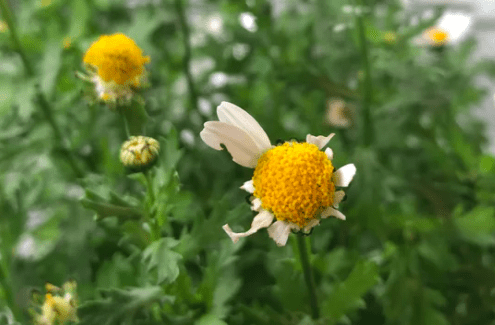Chrysanthemum flowers are one of the most popular flowers in the world. They are native to Asia and have been cultivated for centuries. Chrysanthemums come in many different colors, including white, yellow, pink, red, and purple. The flowers have a wide variety of shapes and sizes, and they can be either single or double blooms.
However, chrysanthemums aren’t always in perfect condition. Sometimes, you may notice holes in chrysanthemum flowers. In this blog post, we’ll discuss what causes these holes and how to prevent them.
Why Are There Holes in My Chrysanthemum?
Pests are the main culprits behind holes in chrysanthemum flowers. Aphids, caterpillars, and mites are all common pests that can damage chrysanthemums. These pests feed on the leaves and stems of the plant, which can cause holes, and even kill the plant if left untreated.
You may be unaware of the presence of pests on your chrysanthemum plants, as the holes they create may be small and hard to see. Plus, the pests come out at night, when you are unlikely to be tending to your garden.
This is unwelcome news for anyone who loves growing chrysanthemums, but luckily there are steps you can take to prevent these pests from harming your plants. Let’s get to how I do it!

How to Remove Pests from Chrysanthemum?
Big pests can often be removed by hand, especially if there aren’t too many of them. You can use a pair of tweezers or your fingers to gently pluck the pests from your chrysanthemum flowers.
If there are too many pests for you to remove on your own, try using insecticide sprays or dust. These products contain chemicals that are toxic to pests but not harmful to humans or other animals. It’s important to follow the instructions on the label carefully when using these products, however, as they can be quite dangerous if used incorrectly.
My favorite pesticide for chrysanthemum flowers is Neem oil, which is a natural and organic product that effectively kills pests without any harmful effects on the plant itself.
Simply mix some neem oil with water and spray it on your chrysanthemum plants to get rid of those pesky pests. The mixture will need to be applied every few days to keep the pests at bay and help your chrysanthemum plants thrive.
How to Keep Pests Away From Chrysanthemum?
The first thing you should do is to inspect your chrysanthemums regularly for signs of pests. Look out for holes in the leaves and stems, as well as discoloration or other damage. You can also use sticky traps or row covers to prevent insects from getting near your plants.
Secondly, keep your garden clean and well-maintained, as this will make it harder for pests to find a home. Remove any fallen leaves or other debris from your garden regularly, and prune any dead branches on your chrysanthemum plants to keep them healthy and strong.
Finally, you should consider promoting beneficial insects in your garden. This will help to keep the population of pests in check and prevent them from damaging your chrysanthemums too much. Try planting flowers and herbs that attract ladybugs, lacewings, or other natural predators of pests.
What Else Causes These Holes?
While pests are the most common cause of holes in chrysanthemum flowers, there may be other factors at play as well. For example, your plants may simply be getting too much or too little water.
Animals
There’s a possibility that animals are entering your garden and damaging your plants as well. Deer, rabbits, and other animals may be eating the foliage on your chrysanthemums or digging their hooves into the soil to get at any buried roots.
To prevent this from happening, you should install a fence around your garden to keep out unwanted visitors. Additionally, try planting some deterrent plants like garlic or cayenne pepper around your chrysanthemums to keep animals away.
Bad Weather
Finally, it’s also possible that your chrysanthemum plants are being damaged by bad weather. Strong winds, heavy rains, or other extreme conditions can cause damage to your plants and leave them vulnerable to pests.
To protect your chrysanthemums from the elements, you should provide adequate shelter for them in the form of a windbreak or greenhouse. Additionally, be sure to take measures to reduce soil erosion and prevent water from pooling around your plants.
Should I Prune Chrysanthemum with Holes?
If your chrysanthemum plants are heavily damaged by pests, it may be best to prune them back to help stimulate new growth. However, this will depend on the severity of the damage and how much of the plant needs to be removed.
Personally, I only prune my plants if a disease or pest infestation is severe and threatens to kill the entire plant. In most cases, it’s best to simply remove any damaged leaves or stems and let the rest of your chrysanthemums grow naturally. If you’re not sure what to do, it may be a good idea to consult a gardening expert for advice on how best to proceed.
Conclusion
In conclusion, holes in chrysanthemum flowers can be caused by a number of different factors, including pests, weather conditions, and animals. To prevent these holes from occurring, you should take steps to manage pests in your garden, provide adequate shelter for your plants, and prune any damaged parts as needed.
Personally, I’ve found that pests are the most common cause of holes in chrysanthemum plants, so I always keep a close eye on my plants and take action to prevent infestations as soon as possible.
Tim is an avid gardener from the UK. He was the founder of PlantCarer.com from 2021 to Sep 2023. He sold PlantCarer.com to Aaron. He has since started his own business called Seed To Supper, which provides new gardeners all the materials you need in a box (pots, seeds, compost and instructions) to grow your own delicious and nutritious vegetables and herbs from start to finish – no garden required.









0 Comments